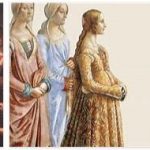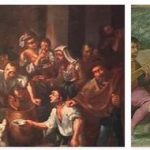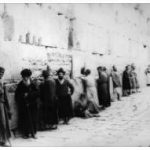In the first decade of the century. XX Swedish politics focused on the issues of electoral law and union. To resolve the first, Boström (1902-1905) became minister of state again; his proposals, however, were rejected by the Liberal party and he resigned. The government was thus deprived of its head and had under the new minister of state, J. Ramstedt, the character of a transitional ministry, when the Norwegian parliament in 1905 declared the union with Sweden expired (see Norway oscar ii).In this situation, parliament took the initiative, demanding a more vigorous Swedish policy than that of the government. In a short time, a parliamentary coalition ministry was formed under the head of the conservative majority party of the first chamber, C. Lundeberg, which led the question of union to an acceptable solution for Sweden. Shortly thereafter the ministry fell and the head of the liberal party K. Staaff became minister of state to resolve the still pending question of electoral law; his proposal was rejected by the first chamber, the king refused to consent to the dissolution of the second chamber, proposed by Staaff – which accentuated the equal authority of the two chambers in the constitutional life of Sweden. A conservative ministry was formed under A. Lindman (1906-11), to which he finally managed to temporarily resolve the constitutional problem: the first chamber was democratized, and the electoral right for the second chamber became general (male); all elections were organized according to the principle of proportional representation. Since then the social questions raised by the socialists have played an increasingly important part; but the labor movement – after an unfortunate general strike in 1909 – marked a setback. When in 1911 the right-wing party (peasants ‘and bourgeoisie’s party), which arose from the union of the peasants’ party and a national progress party, lost many seats in parliament, K. Staaff again became minister of state. The threatening situation abroad made it necessary to strengthen the the army and the national movement in Sweden grew more and more: with a voluntary subscription the necessary means for the construction of a modern battleship were made available to the government; the minister of state, who had previously recommended a reduction in military spending, changed his mind, although he did not want to immediately extend the length of his military service. In front of a mass demonstration of peasants, King Gustav V (elected in 1907) declared, in February 1914, that he did not share the opinion of the minister of state: with this a constitutional conflict broke out. The Staaff resigned and a moderate-conservative ministry was formed by Hj. Hammarskjöld, who dissolved the second chamber.
The new elections considerably strengthened the right-wing party, but did not give it an absolute majority. The world war broke out, the royal proposal for a reorganization of the army was accepted by the parliament; the ministry, which proclaimed Sweden’s neutrality, remained in place. At the initiative of Gustav V the three Nordic kings met in Malmö, where it was decided that the three kingdoms in foreign policy would work together. All Swedish parties adhered to the policy of neutrality; only one group, numerically insignificant, worked, particularly in 1915, for Sweden’s entry into the world war alongside Germany. Members of the right-wing party mostly sympathized with Germany; those of the left parties mostly with the Entente. Made it difficult supply of the people, the left parties wanted a more conciliatory policy vis-à-vis England and stormed violently against the Minister of State Hammarskjöld. He resigned in 1917, and a right-wing government was formed under C. Swartz.
But when in the same year the elections to the parliament were concluded in favor of the left parties – two groups of peasants, then united in 1921 in the “league of peasants”, and a left socialist party, from which the party was formed in 1921 Swedish Communist, they first appeared in these elections – a liberal-socialist government was formed headed by the liberal N. Edén. An agreement with England was immediately concluded. After Finland broke away from Russia, Sweden was the first power to recognize the independence of the new state; unrest broke out in Finland, where the Socialists were supported by the Russian Communists, a large Swedish volunteer “brigade” took part in the war for Finnish freedom; a widespread current of Swedish public opinion even demanded that the “white” government, recognized by Sweden, be assisted militarily. But the socialists of the Swedish government prevented a request from the “white” government to obtain war material from the Swedish arsenals. Only in the Åland Islands, whose purely Swedish population wished to be annexed to Sweden, were Swedish troops sent, which by negotiating with the Russians and the “white” Finns managed to pacify the islands. This policy of the Edén government and the question of the Åland Islands, which was resolved by the League of Nations (where Sweden had entered in 1920) in favor of Finland, caused a certain tension between Sweden and Finland, tension now completely overcome.
The 1918 upheaval in central Europe was of great importance for the constitutional development of Sweden; the first chamber was completely democratized and the electoral right was also granted to women. Since 1919, even in the first chamber, leftist parties were in control. A first result of the new political conditions was the introduction, in 1920, of the 8-hour working day.
The period from 1920 to 1930, after the post-war crisis, was a period of great material prosperity for Sweden. The army was reduced again in 1925, the social legislation for public welfare was greatly perfected; a proposal to introduce prohibition on alcoholic beverages was rejected in 1922 by means of a referendum popular. None of the parties had an absolute majority in parliament and therefore Sweden was ruled either by apolitical administrative ministries (L. De Geer, 1920-21, O. von Sydow, 1921) or by minority ministries. Among these the governments of Hj. Branting, 1920, 1921-23, 1924-25, and R. Sandler, 1925-26, were socialists; the governments of K. Ekman, 1926-28, 1930-32, and F. Hamrin, 1932, left bourgeois, and conservative governments of E. Trygger, 1923-24, and A. Lindman, 1928-1930. But despite the succession of ministries, general policy was decreed by the bourgeois left, which decided between the socialist party on the one hand and the right and the increasingly strong league of peasants on the other. But this left bourgeois party. which later remained divided into two groups and which turned towards the right. For Sweden 2009, please check hyperrestaurant.com.
Around 1930 Sweden was devastated by a great agrarian crisis; in 1931 the general economic crisis made itself felt strongly. A financial catastrophe followed the suicide of the great financier Ivar Kreuger, well known all over the world and who turned out to be a fraud: it did not have as serious consequences as one might have feared, but it produced a profound impression on the people and also influenced political events., when it became known that the head of the left bourgeois party, the state minister K. Ekman, had received large sums from the Kreuger for his party. For the bourgeois parties the situation at the time of the elections to the parliament in 1932 was therefore very shaken and the socialists benefited from it; but they and the communist groups lacked some seats to have an absolute majority in the second chamber. The new socialist ministry, which was formed under the direction of PA Hansson, was therefore forced to turn to the bourgeois group for support. The situation was unexpectedly resolved in the following way: the socialists and the peasants’ league agreed in 1933 on a program, which aimed to subsidize agriculture with various measures and to fight unemployment with large public works.
The period after 1932 is generally characterized in the field of domestic politics by various innovations, indeed, perhaps even by a certain ferment, however sedated by the new general economic situation. New men have appeared. The former leader of the right-wing party, A. Lindman, resigned in 1925; in its place came G. Bagge. The left bourgeois parties united in 1934 in the “popular party”, which is led in the second chamber by G. Andersson and which has a marked anti-socialist policy. The peasants’ league had in 1933 in A. Persson the new leader, who began the collaboration with the socialist party. The national youth movement, which had previously favored the right-wing party, broke with this party, and formed a “national league”, headed by E. Lindholm, new electoral organization with its own parliamentary group. The movement, which fights the division of the nation into “bourgeois parties” and “workers’ parties”, cannot be classified on the usual political scale; however, he is qualified by his opponents as a semi-fascist. Some members of the left wing of the socialists united in 1933 with a communist party, independent from Moscow, in the socialist party (leader K. Kihlbom); finally the Communist Party, which adheres to left wing of the socialists united in 1933 with a communist party, independent from Moscow, in the socialist party (head K. Kihlbom); finally the Communist Party, which adheres to Komintern, has two representatives in parliament.
The worsening of the general situation in Europe has also brought back the question of strengthening the Swedish army; the government’s proposals in this matter were rejected in 1936 as insufficient by the parliament, which accepted instead a proposal from the People’s Party and the League of Peasants, according to which the army and the air weapon were strengthened and reorganized. At the same time the socialist government, following several defeats in parliament, resigned. The leader of the peasants’ league, A. Persson, formed the new government, in which many officials joined. New elections for the second chambers took place in September 1936. The Social Democrats won and formed the Hansson ministry with the support of the agrarians.








